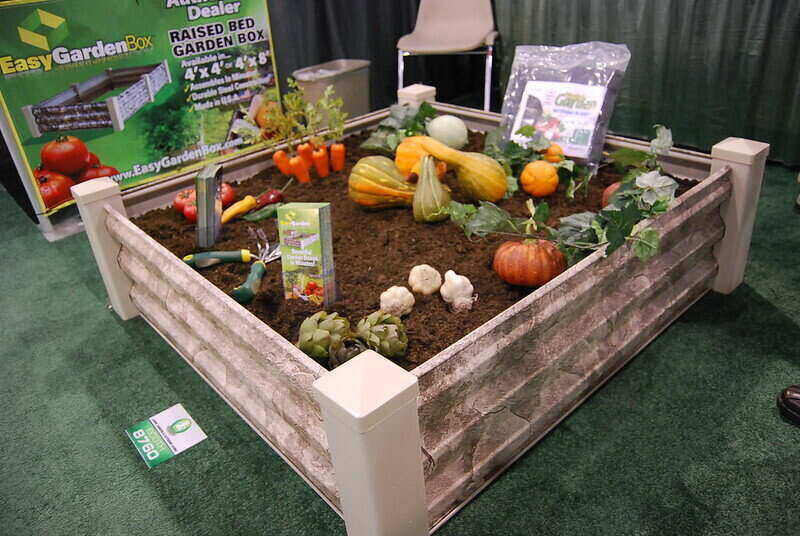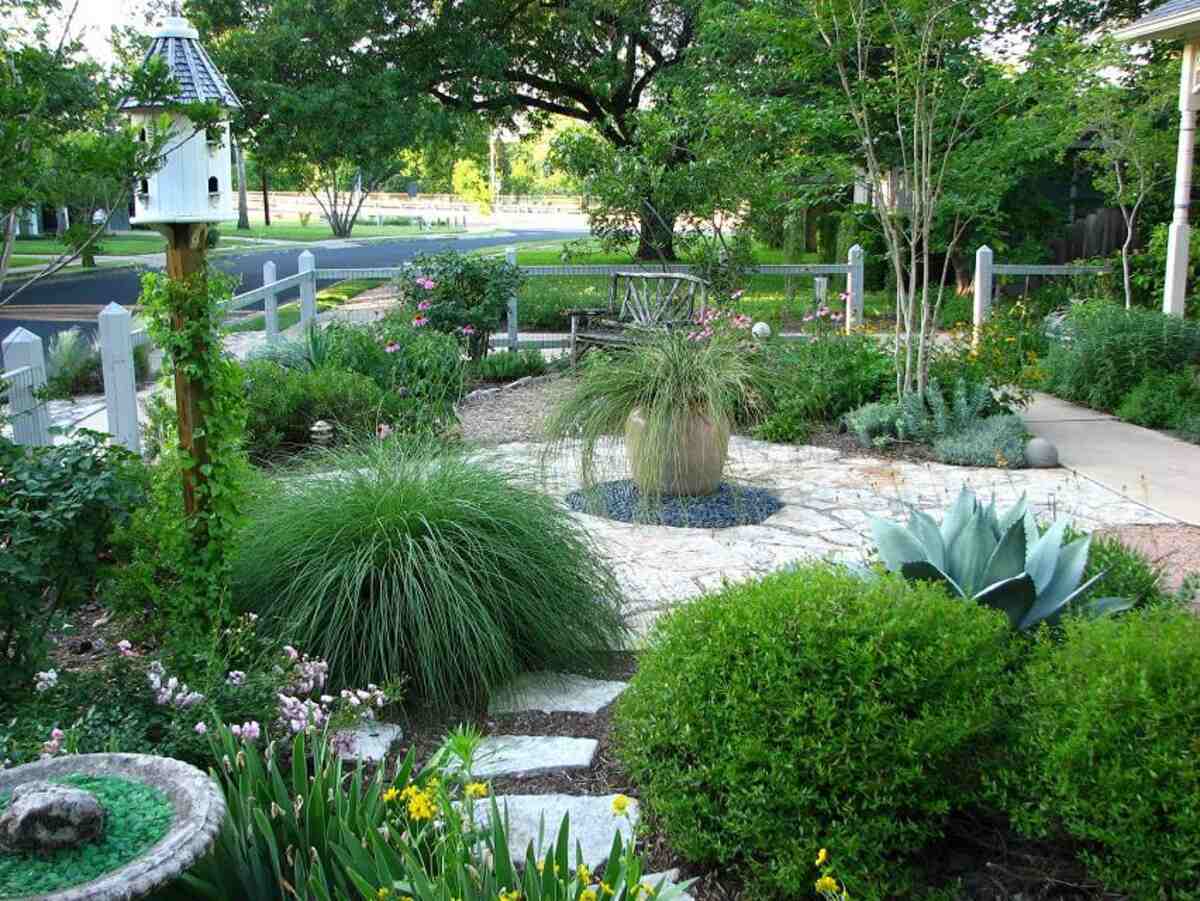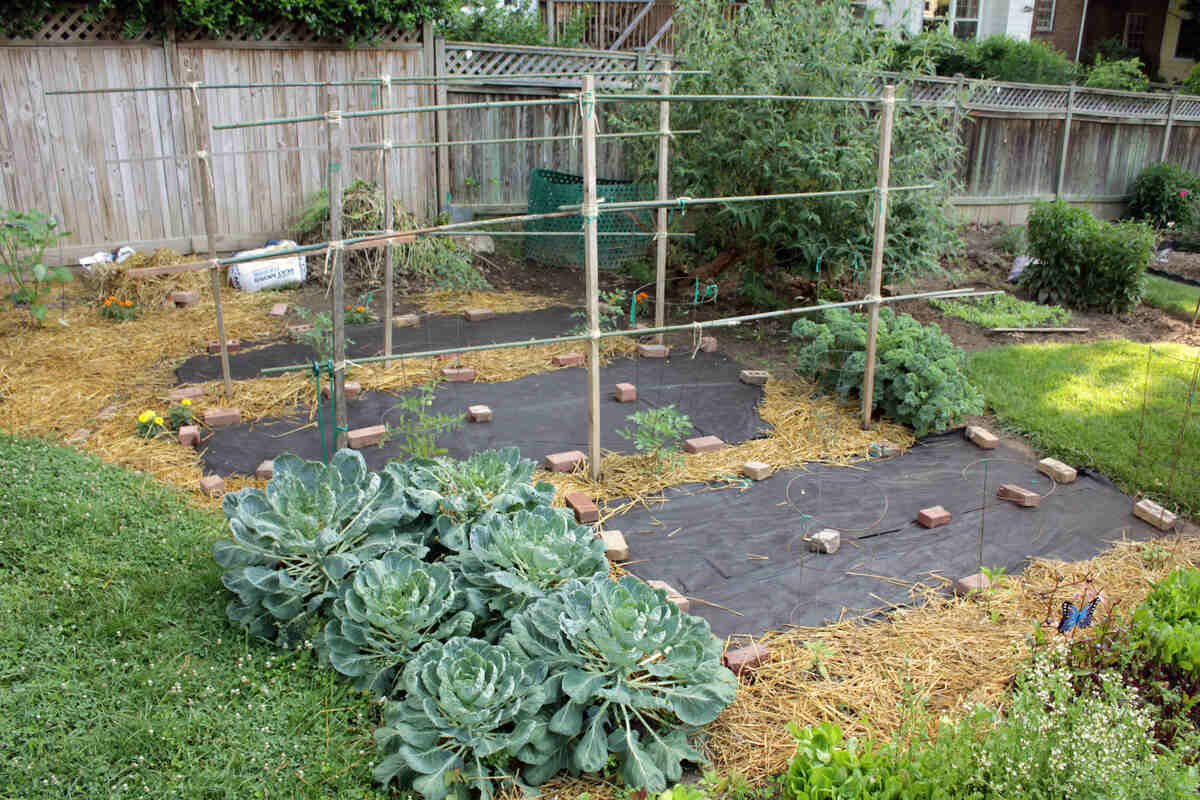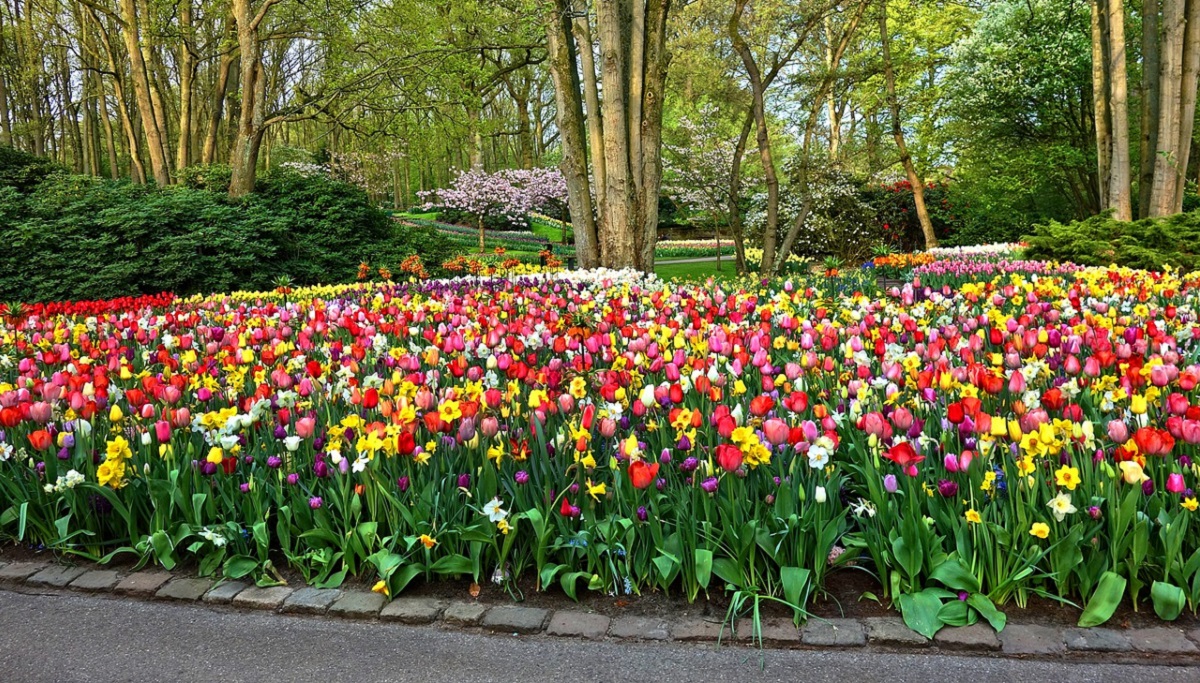
You’ve heard of living on the edge, but what do you know about gardening on the edge?
If your answer is “nothing,” don’t worry. Garden edging is simple. All it entails is creating a border around your planting beds to keep invasive grass out and make your landscape design look more polished.
We’ll give you the low-down on the most popular garden edging materials, along with some basic advice on how to install them yourself.
Why Should You Edge Your Garden Bed?
Installing a garden border is a relatively inexpensive and easy way to boost your home’s curb appeal. Having a tidy garden can even increase your property value.
Landscape edging is about more than appearances, though. It can also contain your mulch and prevent grass from invading your garden space.
The good news is garden edging can be easy and cheap (even free).
For the most basic edge, all you have to do is dig out a small barrier between your lawn and your landscape bed with a spade or shovel. Though this method will save you money, it’ll require regular maintenance down the road to keep your edge neat.
There’s a better way. You can install a permanent garden edging material that will keep your lawn and garden separate without any help from you. With this low-maintenance option, you won’t have to worry about string trimming around flower gardens when you mow your lawn.
Simply choose one of the following landscape edgers and let it do the work for you.
Types of Garden Edging Materials
Metal garden edging
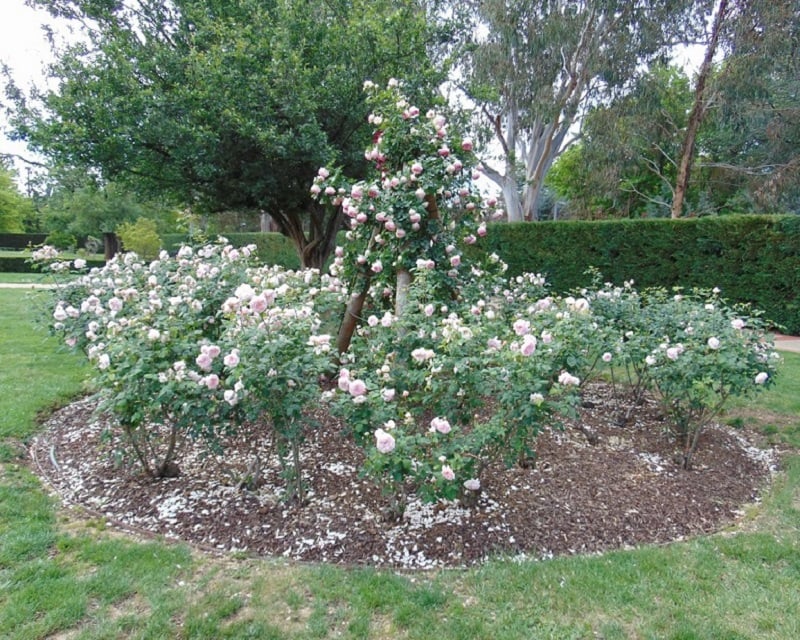
Metal edging options include aluminum or steel. Aluminum edging is harder to find, but it’s the better choice because it won’t rust and it’s lighter than steel edging, making it easier to transport.
Both aluminum and steel edging come in various colors to match whatever mulch you have in your flower beds. Metal edging is made to be subtle (sometimes nearly invisible), as you can see from the example pictured above.
Aside from easily blending in with your landscape, metal edging can also be easy to install. Some varieties come in “no-dig” panels, which means all you have to do is pound them into the ground instead of digging a trench, which many types of edging require.
Plastic garden edging
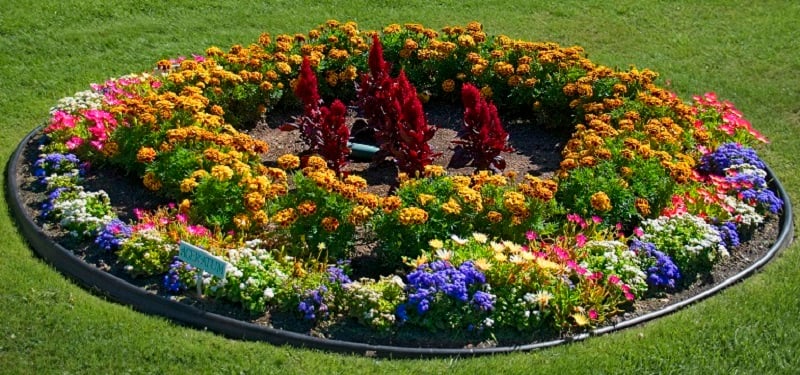
Plastic edging comes in no-dig individual panels for easy installation or long rolls that you can install with a trench. The top of plastic edging typically sticks out of the ground, so it isn’t as subtle as metal. This is one of your least expensive options, though, so the aesthetic sacrifice might be worth the savings to you.
You can find plain black plastic edging at just about any garden center or home improvement store. You’ll usually see regular and heavy-duty thicknesses. Opt for the thicker options if possible, since they’re more durable and can withstand bumps from your lawn mower.
Rubber edging looks and functions similar to plastic edging.
Wood garden edging
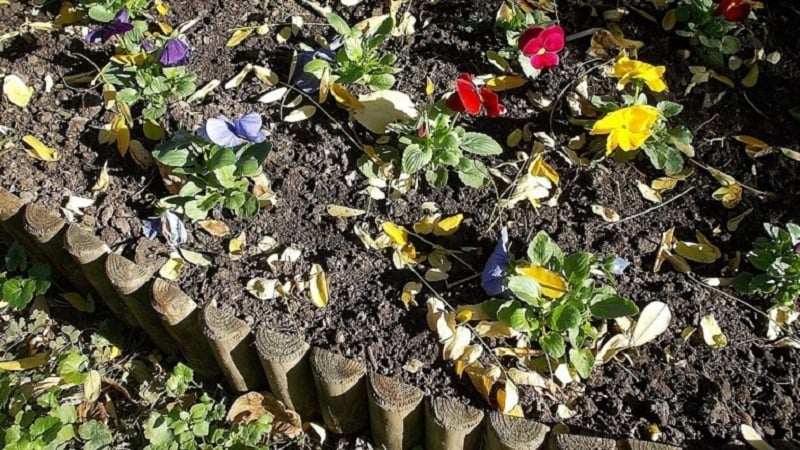
If you want wood garden edging, you have lots of different style options. You could install small individual pieces, like the ones pictured, in a natural log-like shape or square panels.
For a rectangular garden bed, you can use long slabs of landscape timbers. You can even find decorative garden fences made of wood, though these will usually not be as good at holding mulch in place.
What kind of garden edging wood you use depends on the specific look you’re going for. Whatever you choose, make sure you get treated wood that won’t rot.
Natural rock garden edging
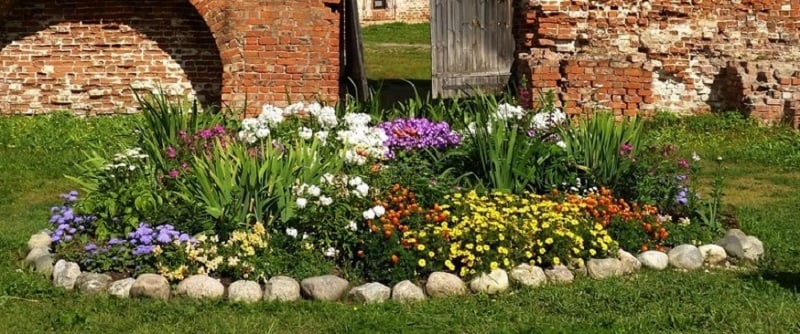
Natural rocks are the perfect garden border if you want your landscape to have a wilder look. Boulders, river rocks, or even pea gravel will keep the grass from overgrowing your flower beds without looking too formal.
Pay close attention when placing the rocks. Don’t leave any gaps where renegade grass or weeds could break through.
Paver garden edging

Paver edging is more expensive and complicated to install than the other types of edging we’ve covered. In return, pavers will look better and last longer.
Installing pavers is a simple way to improve the curb appeal of your landscape. They can elevate your garden both figuratively and literally, since you can use pavers to build a raised garden bed (an especially good idea for vegetable gardens).
Brick garden edging
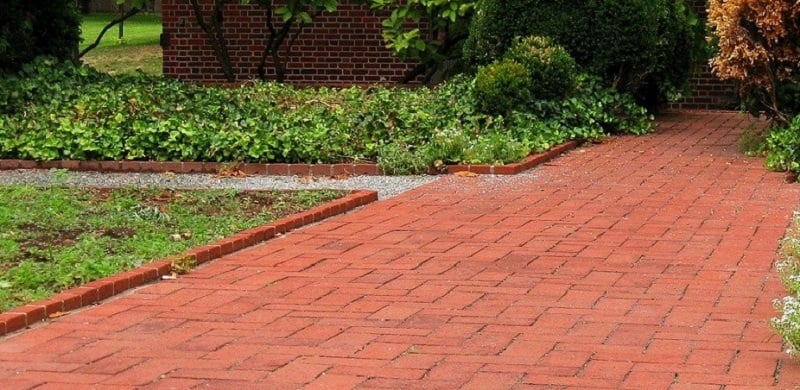
Brick edging is a classic landscaping look that can complement a brick home. Like pavers, these will be a little more complicated to install than simple edging. Keep in mind that it can sometimes be difficult to get all the bricks level.
When shopping for bricks to use in your landscape, make sure you know the difference between brick pavers and regular bricks. You can use regular bricks for landscape edging, but they’re softer and more likely to break down.
Concrete garden edging
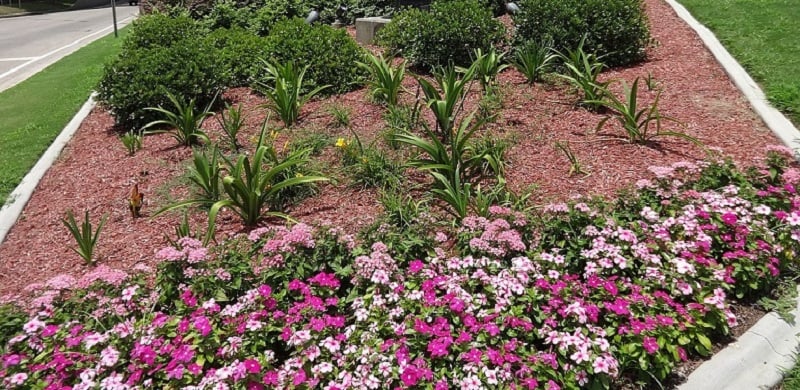
Concrete edging is another landscape border that will last a lifetime. You can use precast concrete pavers or, if you want a more custom shape, poured concrete.
If you choose a poured concrete border, you’ll most likely need help from a professional landscaper. Also keep in mind that you won’t be able to alter the shape of your bed easily. With poured concrete, your garden border will be set in stone.
How to Install DIY Garden Edging
Unfortunately, there’s no one-size-fits-all guide to installing garden edging. With so many different style varieties, the way you install the edging varies, too.
No-dig edging is the easiest to install, since all you typically have to do is pound stakes into the ground. On the other end of the spectrum, stone or brick edging will require using mud mortar and sometimes even cutting the stone with an angle grinder to make the joints fit together.
Basic metal, plastic, or rubber edging falls somewhere in the middle. Here’s how to install simple garden edging materials such as these.
Tools you will need
- Heavy-duty gardening gloves
- Spade
- Pruning shears
- Landscape edging kit
- Hammer
How to install garden edging (in 5 steps)
- Using the spade, dig a trench about 3 to 6 inches deep. Make the trench a little bit wider than the width of your edging material.
- With your pruning shears, cut away any small roots that get in the way of your trench.
- Place the edging material in the trench. If your edging has a decorative top that you want to show, make sure it’s above the trench’s surface level.
- Fill the trench back up with soil. Pack the soil tightly around your edging material.
- Hammer in the edging stakes (which should come with your landscape edging kit) about every 5 feet.
FAQ About Garden Edging
How do you maintain garden edges?
Cut the edge of the grass around your flower beds using a spade, half-moon edger, or another similar tool. If you don’t install a garden edging material, you’ll have to do this regularly.
With any of the materials we listed here, you won’t have to worry about lawn edging or maintaining your garden border.
How do you mow grass around a garden bed?
Any time you’re mowing the lawn near a garden, make sure the discharge chute faces away from the garden. That way, you won’t wreck your plants with lawn clippings and other debris.
For the grass right next to your garden bed, you’ll need to use a string trimmer. However, with the garden edging materials we covered, you can skip the trimming and simply mow right up to the garden edge.
When to Call a Landscaping Professional
Depending on the size of your garden, installing garden edging can be quite a lengthy task. Even with some of the easier-to-install materials, this project usually takes at least half a day. If you don’t have that kind of time to dedicate to landscaping, you could consider hiring a professional landscaper.
With a pro on the job, you won’t have to worry about whether you’re installing your edging correctly. Without lifting a finger (other than to select a landscaping pro on your phone or online), you’ll get garden edging that looks great and functions even better.
So, what are you waiting for? It’s high time you started gardening on the edge.
Main Photo Credit: Pixabay
